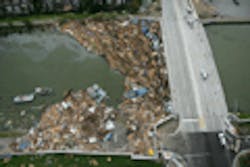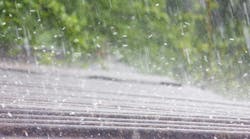Pumps, Levees No Defense in New Orleans
Follwing Hurricane Katrina’s hit on New Orleans, it is turning one of America's most charming cities into a vast cesspool tainted with toxic chemicals, human waste and even coffins released by flood water from the city's legendary cemeteries.
Experts have warned for years that the levees and pumps that usually keep New Orleans dry have no chance against a direct hit by a Category 5 storm.
That's exactly what Katrina was as it churned toward the city. With top winds of 180 mph and the power to lift sea level by as much as 15 ft above normal, the storm threatened an environmental disaster of biblical proportions, one that could leave more than one million people homeless.
"All indications are that this is absolutely a worst-case scenario," Ivor van Heerden, deputy director of the Louisiana State University Hurricane Center, said.
Estimates predict that 60% to 80% of the city's houses have been destroyed by wind. With the flood damage, most of the people who live in and around New Orleans could be homeless.
"We're talking about in essence having - in the continental United States - having a refugee camp of a million people," van Heerden said.
Experts have warned about New Orleans' vulnerability for years, chiefly because Louisiana has lost more than a million acres of coastal wetlands in the past seven decades. The vast patchwork of swamps and bayous south of the city serves as a buffer, partially absorbing the surge of water that a hurricane pushes ashore.
Experts have also warned that the ring of high levees around New Orleans, designed to protect the city from flood water coming down the Mississippi, will only make things worse in a powerful hurricane.
Source: AP


